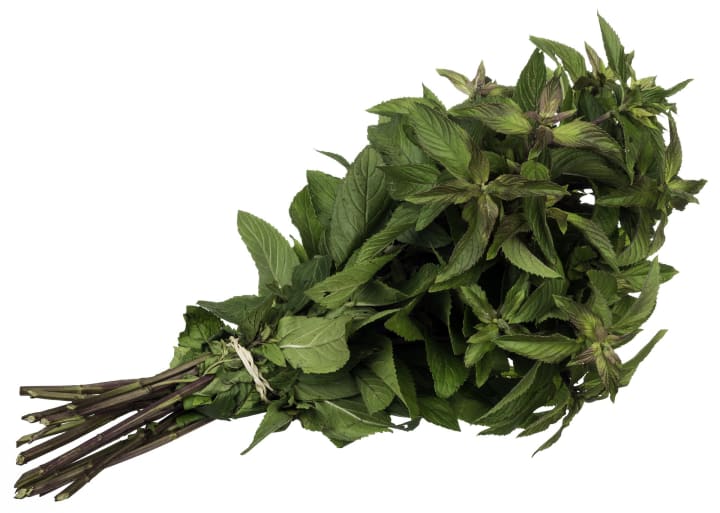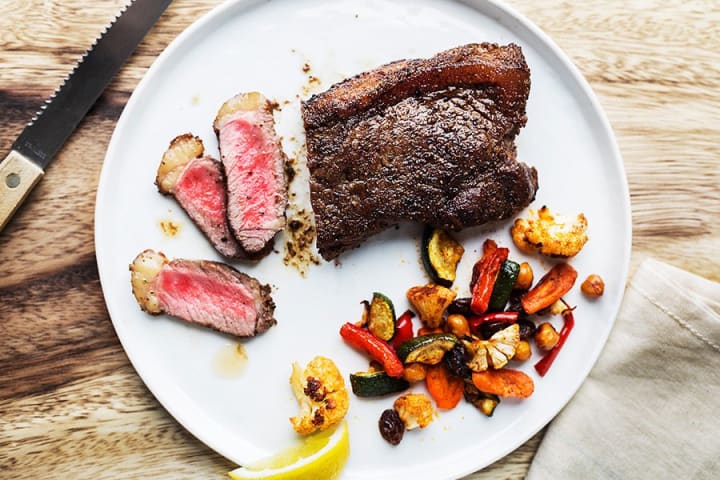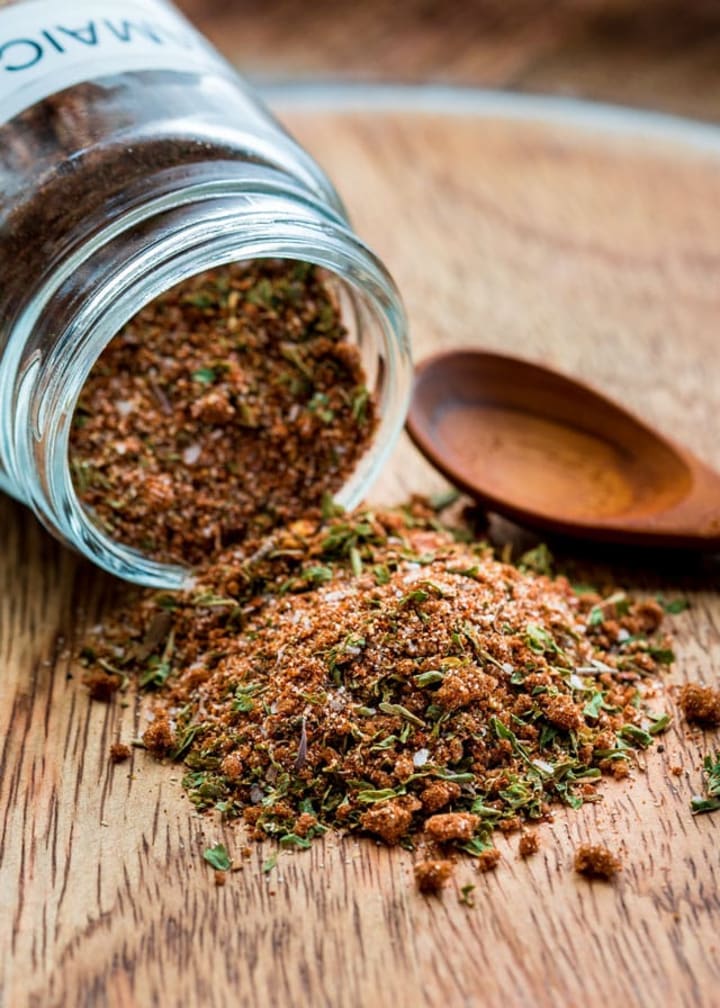Classic Seasoning Combinations You Need to Try
Not all spices go well together, but you can't go wrong with the classic seasoning combinations already well known and established for their flavor profile.

My experience in cooking with seasonings came in four major categories. The first was, well, lack of seasoning: Kraft mac n' cheese, cafeteria food, occasionally tossing some onion powder in with jarred pasta sauce. Ah, college.
Then, I started experimenting with a few tried-and-true combos and spices. I bought onion powder and oregano in bulk, and my cooking impressed absolutely no one. Myself included. So, I started getting more creative...and in phase three, I was tossing everything but the kitchen sink into every dish. Pasta sauce with Worcestershire sauce, Old Bay, thyme, basil, curry powder...needless to say, this was not much of an improvement. It did, however, give me the opportunity to experiment with various combos, and learn an important lesson: Some things go better together than others. Also, herbs and spices are meant to be tasted, not overpowered by others. In the end, knowing a handful of classic seasoning combinations will benefit your cooking far more than being, well...overly experimental.
Herbs de Provence

Photo by Pixabay via Pexels
Herbs de Provence may be the classic seasoning combination. It's a pleasant, subtle mixture of thyme, oregano, savory, and rosemary. Some iterations also include marjoram as well. The name refers to the nature of the mix, which are all herbs native to the Provence region of France. As such, you'll find these flavors commonly in French food. It goes wonderfully with vegetable dishes, roasts, and both tomato and cream sauces. Because all of these herbs are fairly light in flavor, it's not a particularly strong seasoning. Nevertheless, the subtle combination is a trademark of many cuisines, and a classic seasoning combination for cooks of all kinds and experience levels.
Chili Mixes
You can always buy a pre-made chili mix, but knowing the classic seasoning combinations for this kind of dish will help you make the perfect dishes, right to your taste, with the highest quality ingredients. The major components of a good chili seasoning include coriander, garlic powder, onion or onion powder, cumin, salt, and, of course, chili powder or a combination of hot peppers. Some people like a more mild chili, of course, but all good chili should have at least a bit of a kick to it. A dash of cinnamon can also add a bit of kick with a softer (as well as broaden your spice pantry), sweeter edge, but don't be afraid to experiment with a touch red pepper now and again.
Bouquet Garni

Photo via Pixabay
Bouquet Garni refers more to the style of the herbs as you use them than to a specific classic seasoning combination, but there are a few staples and kinds of herbs and spices that generally appear in such a bouquet. In general, this is the combination of dried or fresh herbs; such as rosemary, oregano, peppercorn, bay leaves, sage, and similarly subtle herbs; most commonly found in West European cuisine like what is found in French dishes. By definition, it is a 'bouquet' made by bundling these herbs together in order to flavor stews, sauces, soups, and similar dishes. These flavors go well with many dishes, especially lighter broth-based soups or light meat dishes.
Old Bay Seasoning
Old Bay is one of the most delicious, all-purpose seasonings to have in your arsenal. This is a crucial ingredient for many seafood dishes, and complements these lighter base dishes perfectly. Although it's marketing and traditionally used as a seafood seasoning, these spices have become a classic seasoning combination for all kinds of foods, including snacks like potato chips. To make your own Old Bay-style seasoning, you'll want to include paprika, dry mustard, cayenne and black pepper, celery salt, ginger cloves, cinnamon...this is one situation where it's hard to toss too many things into the pot, as long as you get the ratios right. It should be pretty salty, with a lot of interesting, strong, flavors in small amounts.
Garam Masala

Garam Masala is a classic seasoning combination made of a combination of good mood foods and spices; including, cumin, coriander, cardamom, cinnamon, nutmeg, cloves, sometimes bay leaf, and some kind of pepper—black peppercorn, cayenne pepper, etc. Though the exact recipe differs in various regional cuisines, the general flavor remains constant. It's an ideal spice for roasts, soups, vegetables...anything you want to add some heat to. Literally, garam masala translates to "hot" (garam) and "a mixture of spices" (masala) from Indian. This heat refers both to spiciness, as it provides any dish with a nice kick, and to a savory, warm flavor that spices such as cumin and coriander provide.
Blackening Blends
Blackening is a tradition method of Cajun cooking, but has been adapted to suit all kinds of meals. It generally refers to a method of cooking lighter dishes that take little time to cook, such as fish and chicken, and is cooked for a very short period in a skillet at incredibly high heat—hence the blackening. To maximize on the flavors that this method brings out, you need a good blackening seasoning, which should include oregano, chili pepper or powder, thyme, black and/or cayenne pepper, and garlic and onion powder.
Basil and Oregano

Photo by Narda Yescas from Pexels
When it comes to pizza, you have a lot of seasoning options: pepper flakes, onion powder, olive oil, parmesan cheese...the choices are unlimited. If you're looking for a classic seasoning combination to keep your pizza flavor subtle and simple, you can't go wrong with basil and oregano. These two flavors are crucial to Italian seasonings of all kinds, and often go under appreciated by amateur cooks (and non-cooks). They combine very well with tomato flavors, which makes them perfect for pizza and tomato-based pasta dishes. They're also subtle enough to be fairly safe bets when it comes to entertaining or feeding picky eaters, as they're neither strong flavors nor controversial or unfamiliar ones to most eaters (like cilantro, for example).
Fines Herbes
If there's one thing the French know well, it's herbs. Another classic seasoning combination from this part of the culinary world is the traditional fines herbes, a combination of parsley, tarragon, chervil, and chives. Generally, these herbs are used in dishes that require short cooking times, such as fish and poultry, though they may also be used raw in salads or vegetable mixes. Though this mix is ideally made with at least some fresh herbs, dried or ground versions are very commonly used, especially of the rarer ingredients such as chervil, which will not grow in all climates.
Jerk Seasoning

If you're trying to revive your spice rack, Jerk seasoning is a classic seasoning combination that comes from a place where food is spiritual, the island of Jamaica. It's most commonly known and used with chicken, but can be a delightful addition to many dishes. It usually includes allspice, thyme, onion or onion powder, parsley, cinnamon, black and cayenne pepper for some kick, garlic or garlic powder, nutmeg, chives, salt, and even a dash of sugar. The sweetness of the sugar brings out the savory flavors of the other spices and of the chicken, steak, or vegetables you're cooking with. This combination creates a strong, unique flavor of its own by combining a wide range of both subtle and distinctive herbs and spices.
Curry Powder
Another classic seasoning combination from the broad Indian subcontinent is curry powder. This mix of spices was actually developed in order to bring the fiery flavors of Indian cuisine back to Western Europe. There are, of course, a million ways to make a curry, and everyone has their own preferences, both regionally and individually. That said, most curry powders include coriander, cumin, turmeric, cardamom, chili peppers, cinnamon, cloves, ginger, and dry mustard. Obviously, from this list of ingredients, this mix of spices creates a strong, full-bodied flavor with a lot of kick and spice.
About the Creator
Nicola P. Young
Lover of Books, Saxophone, Blogs, and Dogs. Not necessarily in that order. Book blogger at heartofinkandpaper.com.






Comments
There are no comments for this story
Be the first to respond and start the conversation.